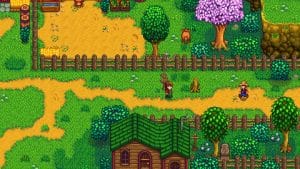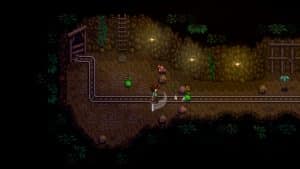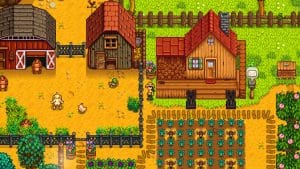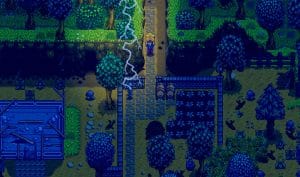Stardew Valley
Related Games
Description
🔥 What is Stardew Valley for PC?
Stardew Valley is a heartwarming farming and life simulation game developed by Eric Barone, known by his developer name ConcernedApe, and originally published by Chucklefish before becoming self-published. Set in the quiet rural town of Stardew Valley, the game begins when the player inherits a run-down farm from their late grandfather and decides to leave behind the exhausting grind of corporate life to start anew. What seems like a simple farming experience quickly transforms into something richer, deeper, and emotionally satisfying, combining elements of agriculture, friendship, exploration, and even fantasy.
As you build your farm from the ground up, you cultivate crops, raise animals, and slowly transform the neglected land into a thriving homestead. But the charm of Stardew Valley goes far beyond soil and seeds: it’s a world filled with endearing townspeople, seasonal festivals, mysterious caves full of monsters, and small stories waiting to be uncovered. The player can choose to live a quiet life of planting and fishing or dive into mining, romance, and the secrets hidden deep beneath the surface of the valley.
Ultimately, Stardew Valley is a game about freedom and discovery, offering players a chance to create their own rhythm of life at a pace that feels personal and fulfilling. It’s a love letter to the farming simulation genre and a shining example of how a single developer’s passion can redefine an entire niche.
👉 Features of Stardew Valley
Deep Farming and Crafting System
At its core, Stardew Valley features a remarkably detailed farming system that allows players to cultivate dozens of different crops across four changing seasons. The way the soil reacts to rain, sunlight, and fertilization gives each planting cycle a satisfying rhythm, and as the years pass, players develop a unique relationship with their land. Crafting tools, machines, and artisan goods adds layers of depth, letting players turn raw materials into high-value products like wine, cheese, and jam.
This farming system is not just about efficiency but expression: some players meticulously optimize every tile for maximum profit, while others build cozy gardens surrounded by fences and flowers. Every choice is valid and contributes to the sense of belonging that defines the experience.
Meaningful Relationships and Romance
The people of Pelican Town aren’t static NPCs they have their own stories, routines, and emotional arcs. As you interact with them, you learn about their personal struggles, friendships, and dreams. You can give gifts, participate in events, and even fall in love, eventually marrying one of twelve eligible bachelors or bachelorettes.
Each relationship develops organically through heart events short narrative scenes that reveal more about a character’s inner life. What makes Stardew Valley stand out is how these interactions are never forced; they feel like genuine connections that evolve over time. You might find yourself helping a shy artist gain confidence or comforting a friend dealing with family expectations. These small moments of empathy make the valley feel alive.
Exploration and Adventure
While the surface world is tranquil and warm, Stardew Valley hides adventure beneath the earth. The mines offer an entirely different experience combat against slimes, bats, and skeletons blends with resource gathering as you dig deeper into mysterious caverns. Each floor introduces new materials, treasures, and challenges, culminating in hidden secrets that expand the game’s lore.
For those who prefer peace over danger, the game also offers the Skull Cavern, a high-risk, high-reward dungeon for late-game players seeking rare loot. Exploration isn’t limited to the underground, though; beaches, forests, and the mountains all hold special places, rare items, and seasonal surprises waiting to be found.
Seasonal Cycles and Festivals
The world of Stardew Valley changes constantly through its four distinct seasons spring, summer, fall, and winter. Each season has unique crops, weather patterns, and local events that shape the daily rhythm of life. Festivals such as the Egg Festival, the Stardew Valley Fair, and the Feast of the Winter Star bring the community together, offering mini-games, competitions, and charming social interactions.
This constant sense of change keeps the game from ever feeling static. Every season carries new opportunities for growth and renewal, both in farming and personal relationships. Even after years in-game, it’s hard not to feel that familiar spark of excitement when spring comes again.
Customization and Creative Freedom
One of the game’s quietest but most powerful features is how much it lets you express yourself. You can design your farm layout from scratch, choosing where to place barns, fences, trees, and paths. The interior of your farmhouse can be decorated with countless pieces of furniture, wallpapers, and flooring options.
With each upgrade, your home and land become reflections of your playstyle some players create sprawling industrial farms powered by automation, while others build rustic, idyllic retreats surrounded by wildflowers and ponds. The sense of ownership and creativity makes every farm feel deeply personal.
Gameplay
Farming and Resource Management
The heart of Stardew Valley’s gameplay lies in the rhythm of farming planting seeds, watering crops, harvesting, and reinvesting profits into better tools and facilities. Time management is crucial, as each day lasts only a few in-game minutes and every action consumes energy. Learning how to balance work, rest, and social life becomes an engaging puzzle that mirrors real-world priorities.
Upgrading your tools through the local blacksmith, unlocking sprinklers to automate watering, and expanding your barns are just a few examples of how progress feels tangible. What begins as a simple patch of soil evolves into a complex ecosystem of growth, efficiency, and care.
Mining, Fishing, and Combat
Beyond the farm, the mines provide an exciting change of pace. Equipped with a sword or pickaxe, players explore procedurally generated floors filled with ore veins and enemies. Combat is straightforward but satisfying, and rare minerals like iridium or diamonds reward those who brave the deepest levels.
Fishing, on the other hand, is both relaxing and skill-based, using a unique mini-game that requires timing and patience. The variety of fish across seasons and weather conditions adds surprising depth to this seemingly simple activity. Each of these systems complements the farming core, providing new ways to gather resources and diversify your routine.
Social Life and Storytelling
Life in Pelican Town unfolds gradually as players form relationships and learn the stories behind each inhabitant. From the melancholic musician Sebastian to the quirky inventor Maru, every character feels distinct and emotionally grounded. Building relationships isn’t just a side activity it ties into the broader themes of belonging, purpose, and transformation.
The game also subtly encourages reflection on modern life and community. The player’s escape from the soulless corporate world of JojaMart contrasts with the warmth of local cooperation and slow living. Over time, the narrative of Stardew Valley becomes your own: a story of rebuilding, rediscovery, and quiet happiness.
Progression and Endgame
Progress in Stardew Valley feels organic, guided more by curiosity than by strict objectives. The Community Center offers a major storyline where you collect items to restore the town’s heart, unlocking new features and rewarding community-driven play. Alternatively, you can side with the Joja Corporation, embracing a more industrial route that trades charm for efficiency.
Even after completing the main goals, new updates and hidden secrets continue to expand the world. From the mysterious Ginger Island to secret notes and hidden areas, there’s always another layer to uncover, ensuring the game remains rewarding long after the first harvest.
Graphics
Whimsical Pixel Art Style
Stardew Valley’s art style is deliberately nostalgic, inspired by 16-bit classics but infused with modern polish. The pixel art captures warmth, texture, and emotion in every detail from the way rain glistens on crops to the cozy glow of your farmhouse at night.
Each environment has its own personality: the shimmering ocean, the deep greens of the forest, and the soft amber tones of fall all contribute to a world that feels alive and handmade. It’s a style that proves simplicity, when done with care, can be more expressive than realism.
Animation and Environmental Details
Although minimalist, the animations in Stardew Valley carry immense charm. The gentle sway of trees, the crackle of the campfire, or the fluttering of butterflies all add subtle motion that enhances immersion. Weather effects like lightning storms and snowfall further strengthen the atmosphere, making each day feel distinct.
This attention to small details combined with music that adapts to time and season creates a deeply soothing sensory experience. Whether you’re working in the fields or fishing by moonlight, the world feels vibrant and comforting at once.
Pros and Cons
✔️ Pros
- Deeply satisfying farming and life simulation with meaningful progression
- Endearing cast of characters with emotional and memorable storylines
- Relaxing atmosphere supported by a beautiful soundtrack and visuals
- Endless replayability through customization, seasons, and player freedom
- Expansive updates and mod support that keep the game alive for years
❌ Cons
- Early-game pacing can feel slow for impatient players
- Inventory management becomes cumbersome in long sessions
- Combat is functional but lacks the complexity of other systems
- Time limits per day may frustrate those wanting a more relaxed pace
ℹ️ Game information
Release Date: 26/02/2016
Update Date: 05/10/2025
Version: v1.6.15
Genre: Simulation
Platform: PC
Language: ![]()
![]()
![]()
![]()
![]()
![]()
![]()
![]()
Weight: 500 MB
Additional info: New version includes all DLCs to date
⭐ Installation Instructions
- The game is fully complete, you just need to install it, so there is no need to unpack it or download it from other sources.
- Just run the Stardew Valley.exe installation file.
- Simply launch the game from shortcut desktop.
⚙️ System Requirements
✅ Minimum:
- OS: Windows 7
- Processor: Pentium 4 2.4 GHz
- Memory: 2 GB RAM
- Graphics: Graphics card 256 MB
- DirectX: Version 10
- Network: Broadband Internet connection
- Storage: 500 MB available space
Images







